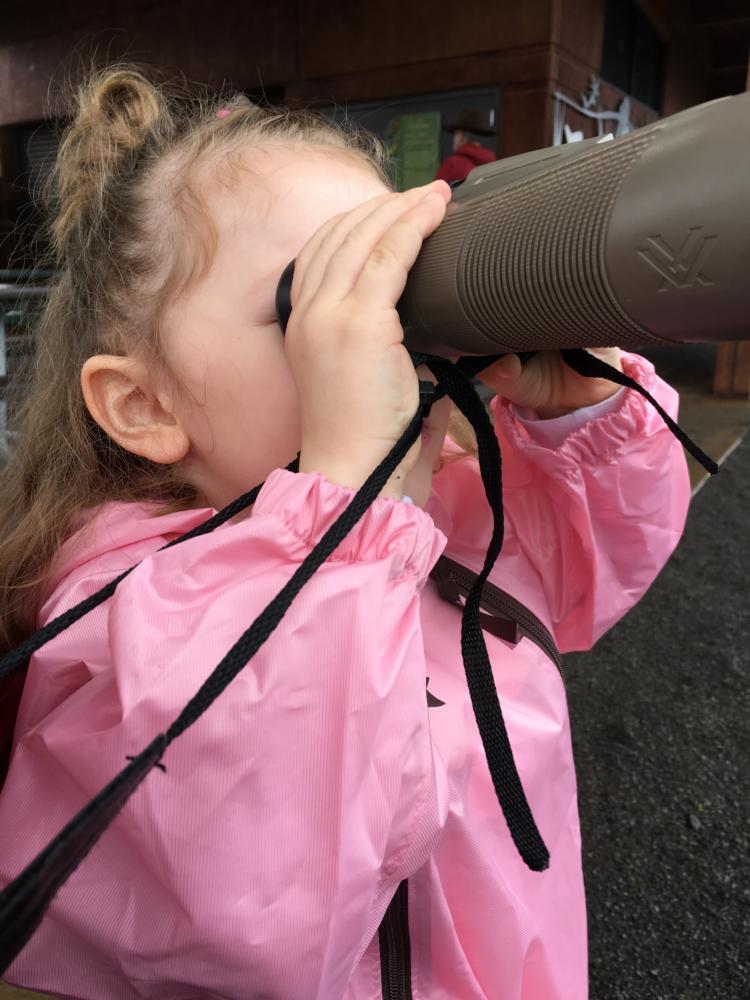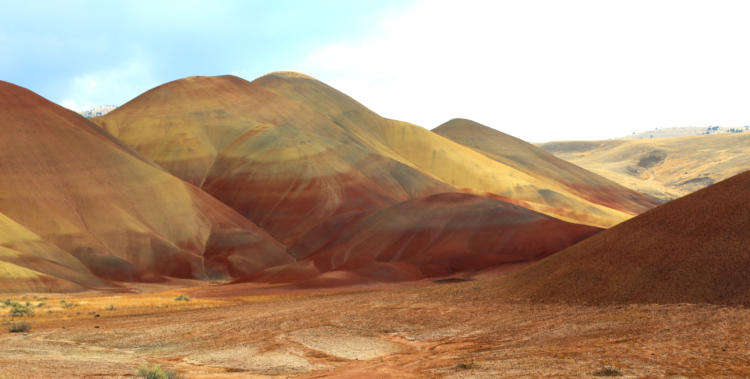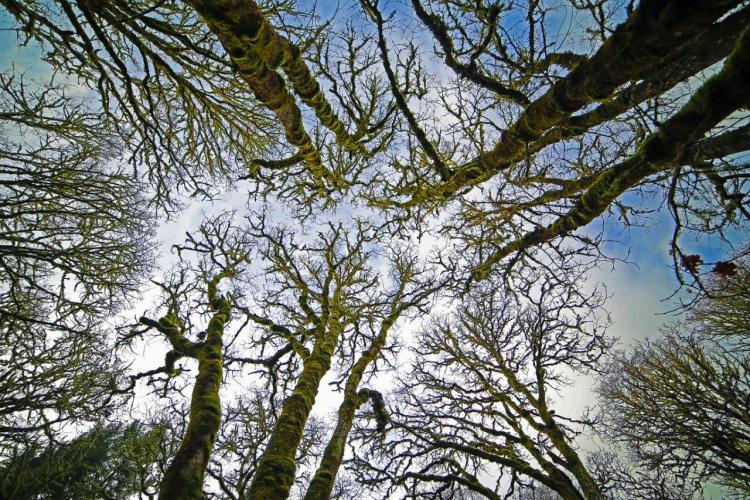Funding
The Oregon Conservation Strategy identifies priorities for conservation actions and for collecting further information about Oregon’s species and habitats. Currently, there is insufficient funding and capacity to address all of the priorities. As the lead entity for developing and updating the Strategy, the ODFW supports collaborative efforts to identify funding for the conservation priorities identified in the Strategy. Funding is needed for the ongoing conservation efforts of the ODFW and partner organizations to implement actions identified in the Strategy.
The ODFW recognizes that providing leadership in advancing implementation of the Strategy is a key agency role that needs to be further developed regarding capacity for project coordination and oversight, prioritizing and initiating ODFW-led actions, monitoring species, and seeking project funding. At present, the ODFW’s Wildlife Conservation Program is inadequately funded to meet these needs. The 2015-17 ODFW budget request included an outline for $1,000,000 of state general funds for “Oregon Conservation Strategy Implementation”. The agency request was intended to provide staffing to conduct survey and inventory work on at-risk species identified in the Strategy. The requested funding was not included in the final 2015 legislatively approved budget. However, the 2015 legislature did pass, and the governor signed, a significant bill (HB 2402) that established a Task Force for funding fish, wildlife, and related outdoor recreation and education. The law directed the Task Force to develop recommendations for legislation that strengthen the ODFW’s ability to carry out its conservation and related programs, including the identification of alternative funding sources and recommendations on how to better achieve the objectives of the Conservation Program. It is anticipated that this effort will assist in the achievement of the ODFW’s mission and address the challenge of funding Strategy implementation. Continued successes with implementation of the Strategy will need ODFW expertise and project funding to maximize the number and quality of projects completed to benefit Oregon’s wildlife.
Implementation
Everyone Can Help
Although the ODFW leads the effort to develop and update the Species, Habitats, and Conservation Opportunity Areas identified in the Strategy, partnering organizations are essential to success. Partners include federal, state, and local agencies, tribes, conservation organizations, outdoor recreation groups including guides, hunters, and anglers, private landowners, and related organizations (e.g., SWCDs, watershed councils, irrigation districts, etc.). Some ideas for implementation include:

- Oregon Department of Fish and Wildlife:
- Continue to support the ODFW’s ongoing conservation and restoration work statewide. ODFW’s fish and wildlife biologists have strong local knowledge and invaluable relationships with local partners to help guide conservation opportunities and find economies-of-scale.
- Continue to use the Conservation Strategy to: update Wildlife Management Area plans, help prioritize Access & Habitat Program projects, and assist in prioritizing Willamette Wildlife Mitigation Program projects.
- Use the Conservation Strategy to inform agency workplans. Focus survey and conservation efforts on priority Strategy Species. Provide updates on implementation progress to the Oregon Fish and Wildlife Commission.
- Use the Conservation Strategy for guidance when responding to emerging issues. For example, develop and provide recommendations to agencies responding to drought that offer relief for fish and wildlife species. Continue to participate in the implementation and update of Oregon’s Integrated Water Resources Strategy, as well as using the Strategy to shape ODFW input on state and federal public forest and rangeland management planning efforts.
- Outdoor interest groups, businesses, travel organizations, landowners, and conservation partners:
- Select Strategy Species and/or Strategy Habitats and use the list of conservation actions to guide conservation and restoration efforts.
- Promote efforts to get outdoors for recreation and wildlife viewing.
- Find information on Strategy Species and Strategy Habitats to inform conservation projects.
- Get involved with citizen science efforts to report wildlife sightings.
- Business owners can promote local or ‘conservation certified’ products, engage employees in restoration efforts, support habitat protection investments, and improve habitat on company lands.
- Universities and citizen science groups:

Photo Credit: Liz Dreith. Birding at the Tualatin National Wildlife Refuge. - Address research needs and data gaps identified in the Strategy.
- Collect biological data to inform mapped or modeled data on Strategy Species and Strategy Habitats.
- Report monitoring results to online central databases (for example, eBird, Oregon Biodiversity Information Center) that can be used for adaptive management and evaluation.
- Report project information to centralized project tracking programs, such as the Conservation Registry.
- Provide and interpret information about the Strategy. For example, the interpretive posters on wildlife crossings at Lava Butte Visitor Center in Bend reach and inform a wide audience on an emerging conservation issue.
- State and federal agencies, counties, and municipalities:
- Continue to utilize the priorities in the Conservation Strategy to administer funds and programs, manage lands, develop or revise management plans, monitor species, and restore habitats.
Statewide Framework for Strategy Implementation
Through the 2016 update process, stakeholders identified a continuing need for a statewide forum to keep partners accountable to progress, evaluate how local actions fit into the big picture, share ‘lessons learned’, and find economies-of-scale. The forum should include the conservation community, public land managers, private landowners, and related groups. This role could be filled by an existing statewide group or development of a new one. One example could be an annual expanded ODFW Conservation Leaders Group meeting focused on the Strategy. The statewide forum could consider the results of local conservation actions and provide information back to the ODFW. If needed, a smaller implementation team could meet more frequently, involving partner organizations and other state agencies in developing a workplan, budgets, and funding strategy.
Ecoregional Conservation Action Teams
Local conservation actions and partnerships are the heart of the Conservation Strategy, and success depends upon supporting these efforts.
Through the 2016 update process, stakeholders identified a need to support conservation action teams at the local or ecoregional level. These teams could define conservation goals and practical implementation plans, and could report annually at statewide meetings. Teams could be organized to complement existing efforts, without creating new teams unless necessary. Teams could be organized by ecoregion, involving partners to best meet local conservation needs. Teams could be organized by the ODFW and/or partners.
Conservation action teams may include: federal, state, and local agencies, Oregon Watershed Enhancement Board, Rocky Mountain Elk Foundation, land trusts, watershed councils, conservation organizations, landowner representatives, and other organizations. Teams could support key efforts, such as the Willamette Wildlife Mitigation Program (in the Willamette Valley) and the Sage-Grouse Conservation Partnership (in the Northern Basin and Range).
Example actions for the teams include:
- Develop an “Adopt a Conservation Opportunity Area” program, allowing local organizations to assist with reporting on ongoing or recommended priority actions in a COA.
- Consider where conservation easements or land acquisition are most strategically needed, or what other tools may be most effective in achieving desired outcomes.
- Promote fish and wildlife habitat connectivity among Conservation Opportunity Areas and other priority landscapes.

Review Plan
ODFW will continue coordination with federal, state, and local agencies, tribes, conservation organizations, outdoor recreation organizations, and other groups to evaluate, implement, and review the Strategy. Coordination efforts will follow the outline above, as well as continuing existing efforts through ODFW’s district offices.
This Strategy website will offer updated content, including new guidance documents, species monitoring plans, citizen science efforts, local conservation efforts, potential partners, and other supporting information. The ODFW anticipates updating the supporting information annually to the extent possible. Changes will not be made to the Eight Required Elements without USFWS consultation and review.
The ODFW will lead the next comprehensive review of the Strategy, covering all USFWS requirements, no later than October 1, 2025.
